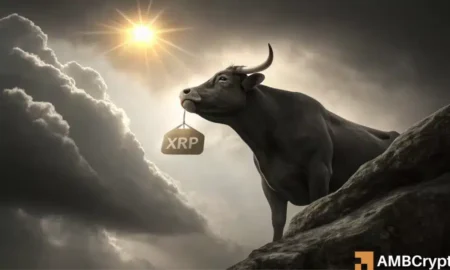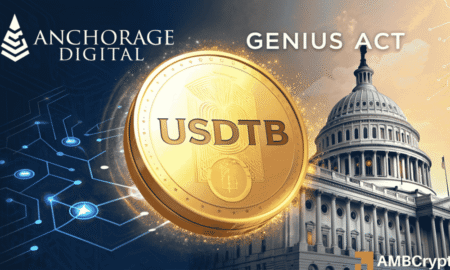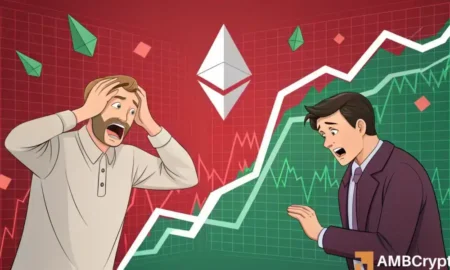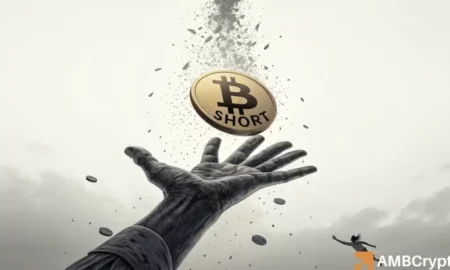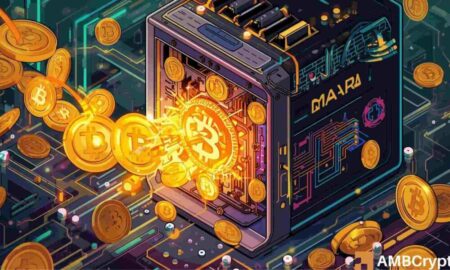Understanding Solana’s Ascendancy in Decentralized Exchanges: Trends, Drivers, and Future Outlook
Introduction
In an astonishing turn of events, Solana has surpassed Ethereum in daily decentralized exchange (DEX) trading volume, marking a pivotal shift in the blockchain landscape. As of a recent analysis by DefiLlama, Solana’s trading volume reached an impressive $5.84 billion in just 24 hours, narrowly eclipsing Ethereum’s $5.75 billion. This significant uptick in trading activity is backed by solid stablecoin inflows and improved infrastructure, leading to a burgeoning ecosystem that attracts both retail and institutional investors. As we analyze the current landscape, we’ll explore the key factors contributing to Solana’s recent rise, its current price trends, and potential future developments.
The Liquidity Surge: A Key Driver of Dominance
Central to Solana’s DEX dominance is the unprecedented surge in stablecoin supply. Recent data reveals that stablecoin circulation on the Solana network has ballooned to an all-time high of $17.5 billion. This influx not only bolsters liquidity but also positions Solana as an attractive trading venue for high-frequency traders and automated market makers. Major DEXs such as Jupiter, Raydium, and Phoenix have noted an increase in stablecoin-backed transactions, enabling seamless swaps and deep liquidity—even during volatile market conditions. This liquidity influx suggests not merely speculative interests but a growing institutional inclination to engage in decentralized finance (DeFi) markets.
Price Recovery: Signs of Renewed Investor Confidence
The price of SOL has echoed the improving market sentiment. Recent trading data from TradingView shows a notable rebound of 5.78% within 24 hours, bringing SOL’s price to $208.60. Despite enduring a dip from $221 to $177 between October 10 and 11, the token found essential support around the $180 mark, demonstrating resilience amid broader market sell-offs. Current technical indicators, including the Relative Strength Index (RSI) at 47.7, suggest a neutral momentum with ample potential for upward movement if buying pressure sustains. Resistance levels around $220 and support near $190 create an optimistic outlook for SOL as further bullish activity may reinforce this uptrend.
Stablecoin Influence and Market Dynamics
The rise of stablecoins like USDC and PYUSD has critically influenced Solana’s liquidity landscape. These stablecoins act as anchors, offering a stabilizing force in a sector often marked by volatility. The growing presence of these assets has facilitated deeper order books and lower slippage during swaps on Solana DEXs, further enhancing attractiveness to traders. This phenomenon underscores a critical transitional phase for DeFi, where institutional participation is becoming more normalized. In the wake of recent market instabilities, such participation illustrates a shift from speculative trading to more sustainable investment behaviors within the ecosystem.
Competitive Landscape: Challenging Ethereum’s Dominance
Solana’s ascension doesn’t occur in a vacuum; it reflects a larger trend within the DeFi space where Ethereum has long been the frontrunner. Noteworthy is Solana’s consistent narrowing of the performance gap against Ethereum concerning trading activity and developer traction. As 2025 unfolds, Solana’s ecosystem of DeFi applications, coupled with heightened transaction throughput, positions it as a serious contender for Ethereum’s long-held supremacy. This burgeoning environment is not only attracting new users but also retaining existing ones, creating a robust cycle of growth and development.
Future Prospects: What Lies Ahead for SOL?
Examining future prospects, should liquidity levels around stablecoin supply remain robust and SOL maintains its momentum above $200, there is potential for Solana to further consolidate its position within the DEX market. This could lead to enticing opportunities for institutional investors looking to explore DeFi. The ongoing development of infrastructure, along with innovations tailored towards enhanced user experiences, could solidify Solana’s status as a preferred choice in this competitive landscape. Furthermore, if the current market sentiment persists, there is a strong likelihood that Solana might experience sustained interest and accelerated growth in its DEX activities.
Conclusion
Solana’s recent achievements in DEX trading volumes underscore a significant shift in the decentralized finance landscape, driven by an influx of stablecoins and enhanced liquidity. As SOL experiences renewed price momentum and garners increasing attention from institutional players, its future appears promising. The competitive dynamics with Ethereum will only intensify as both chains strive to innovate and enhance their offerings. For investors and participants in DeFi, keeping an eye on Solana’s developments is crucial as it stands on the precipice of potentially redefining decentralized trading.










